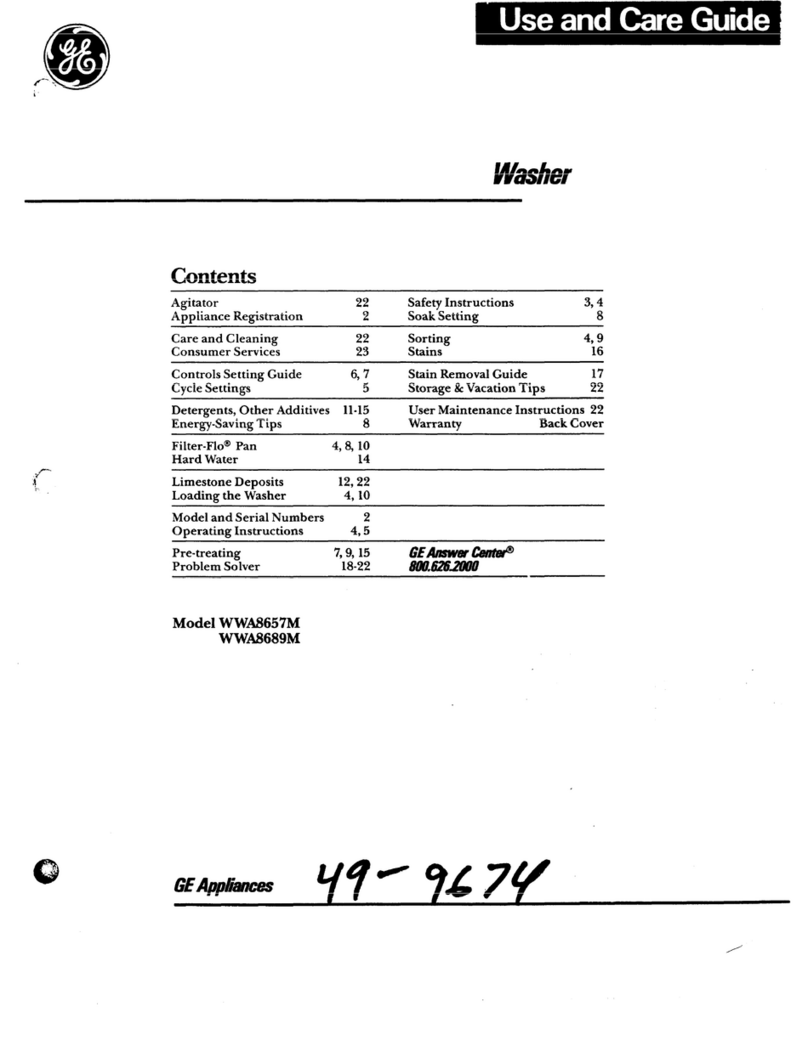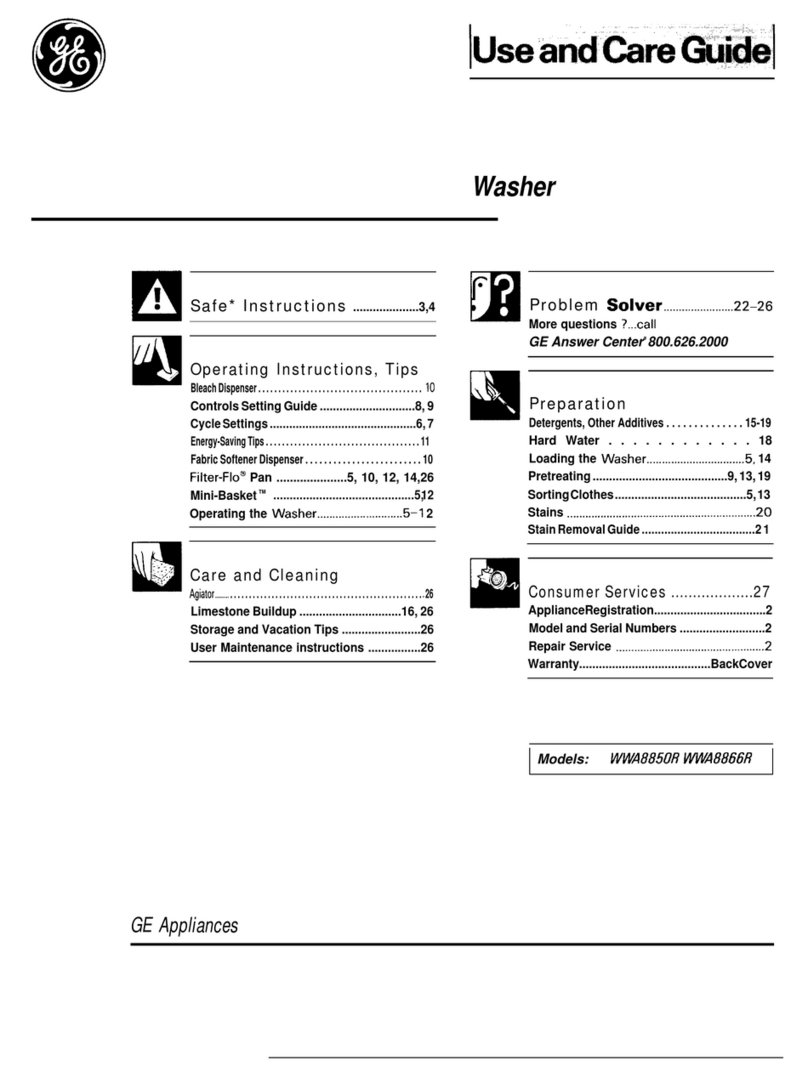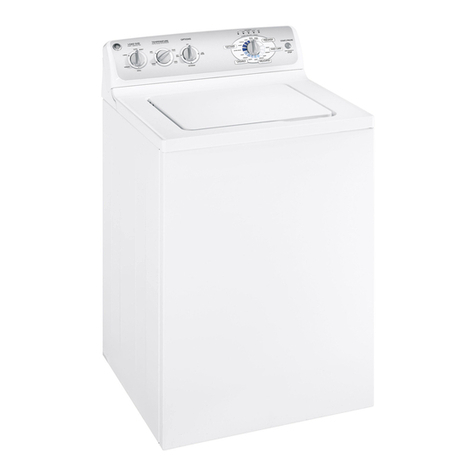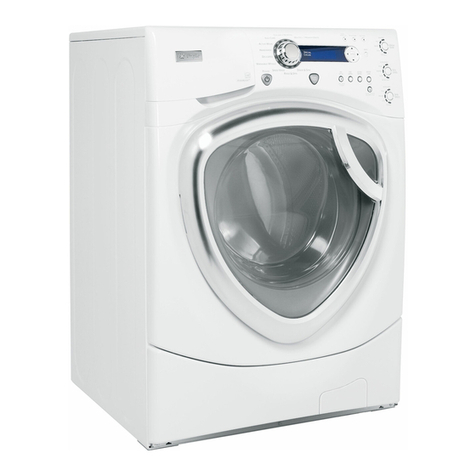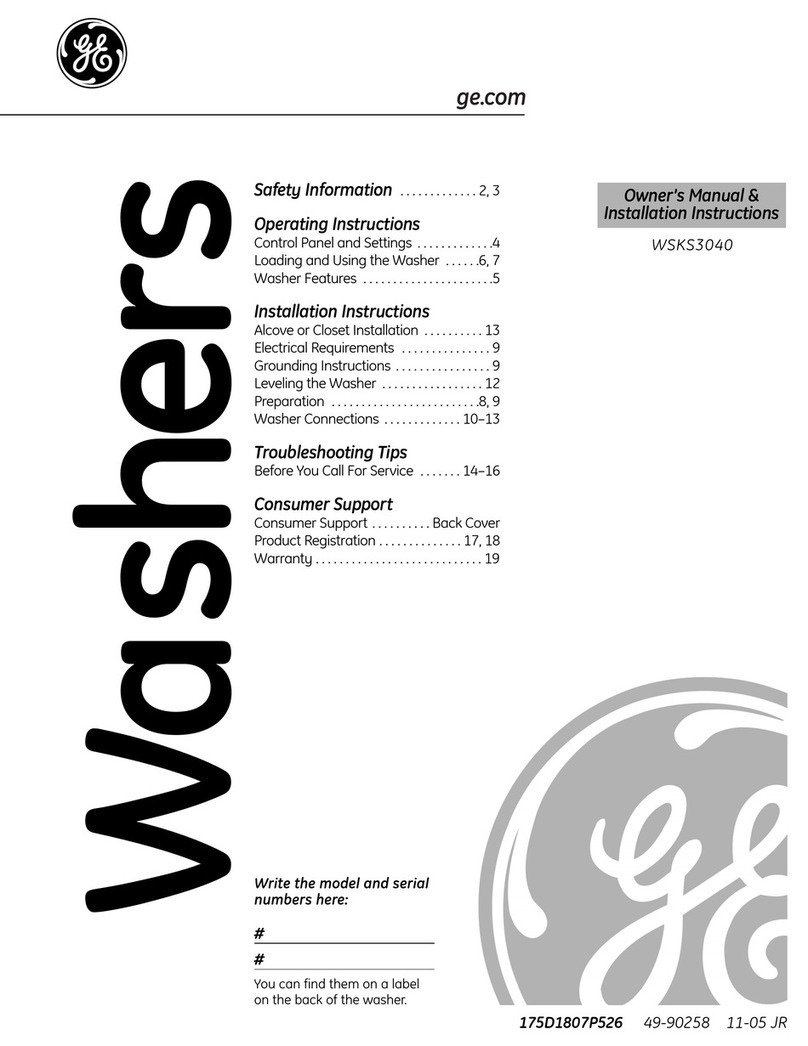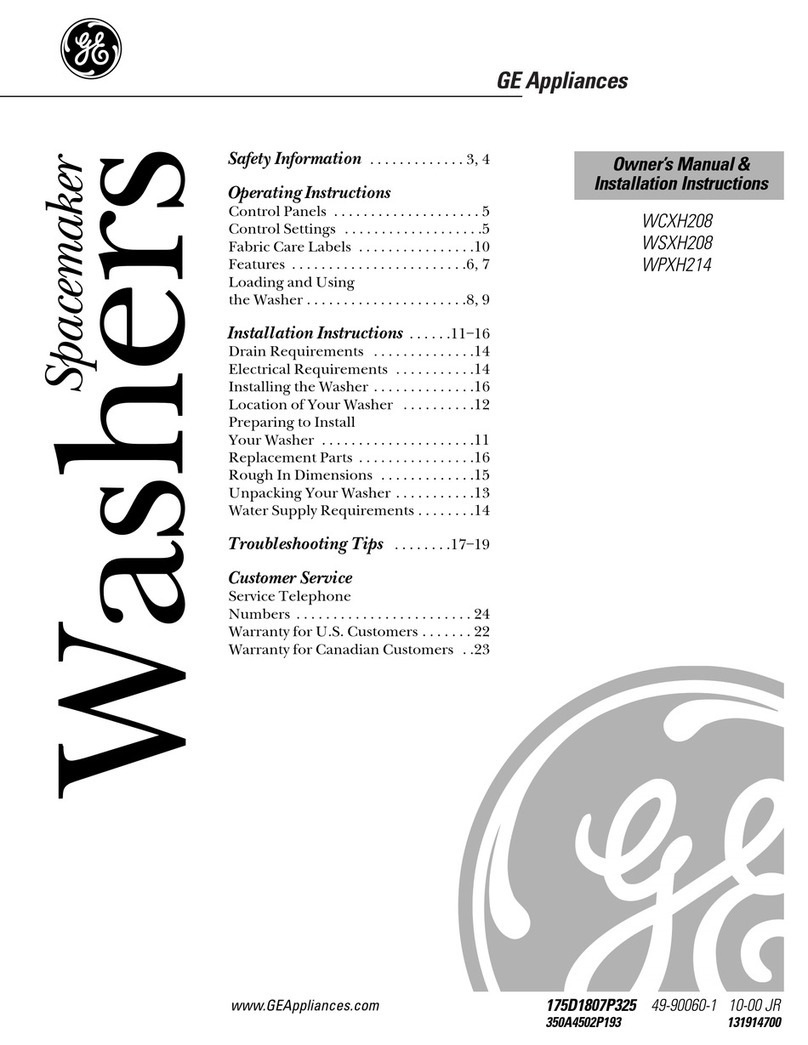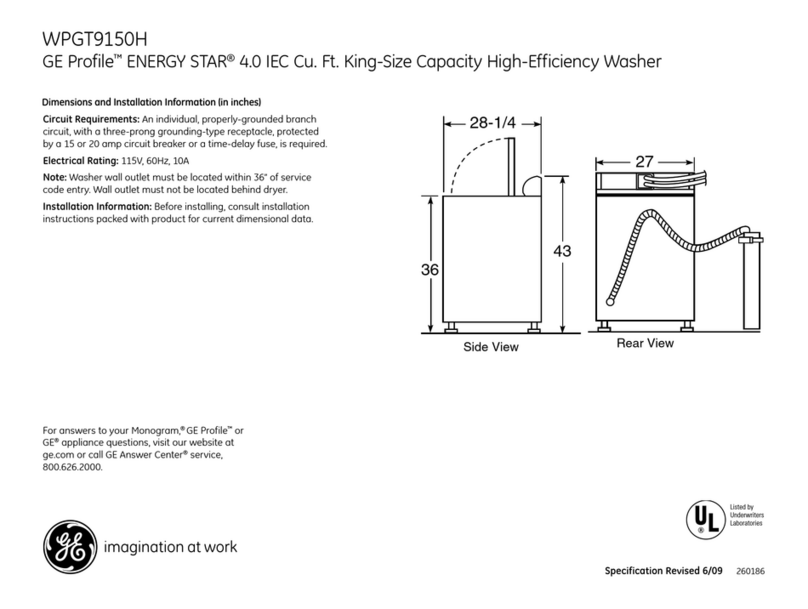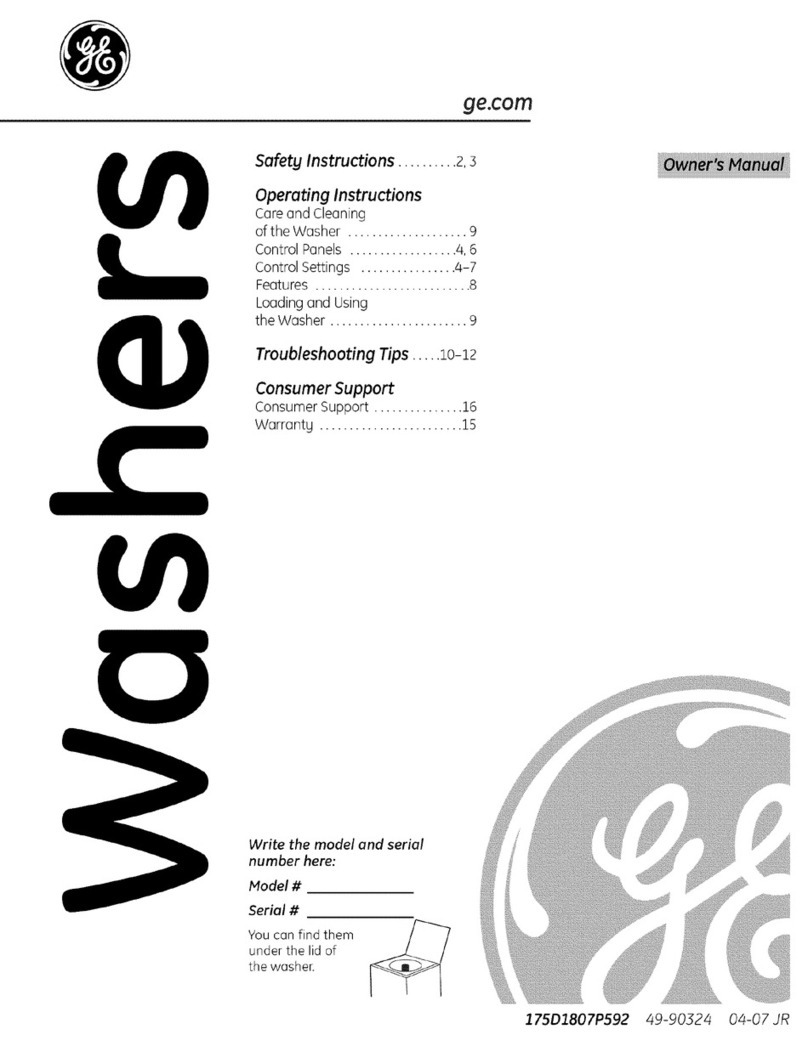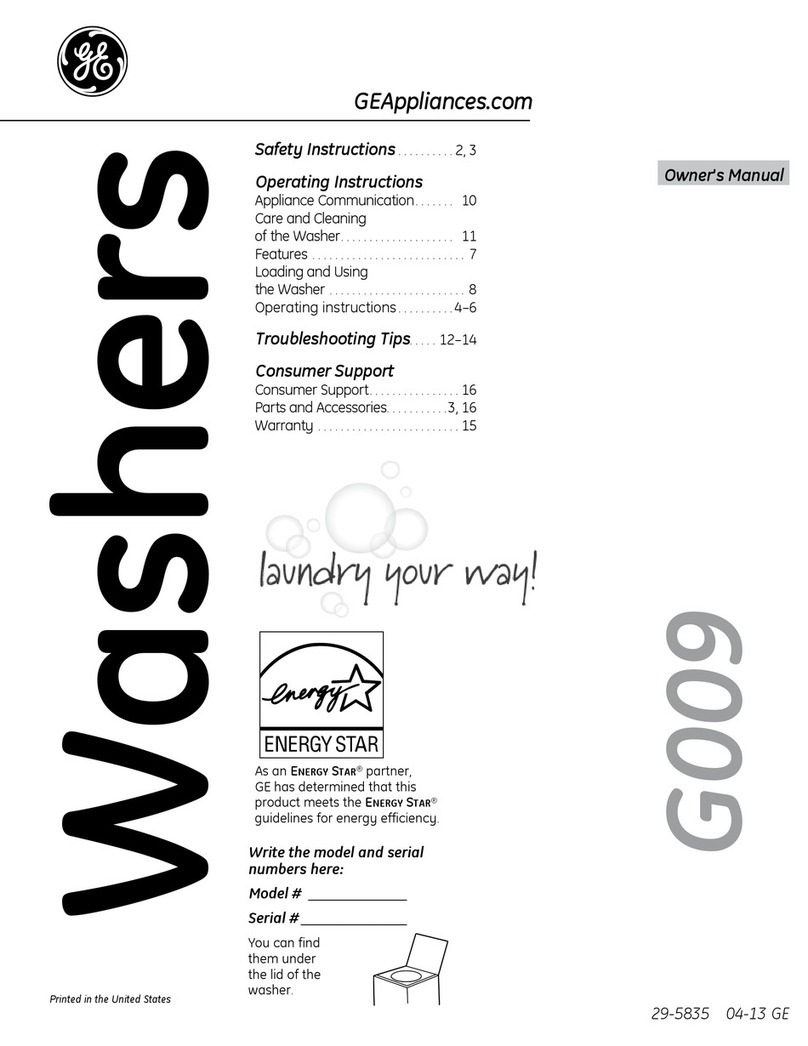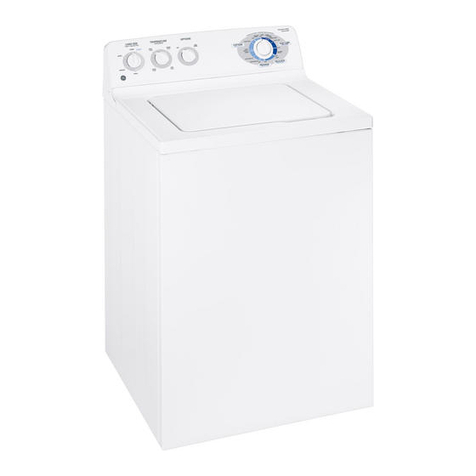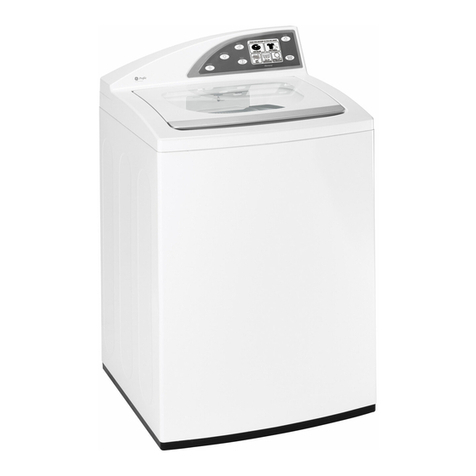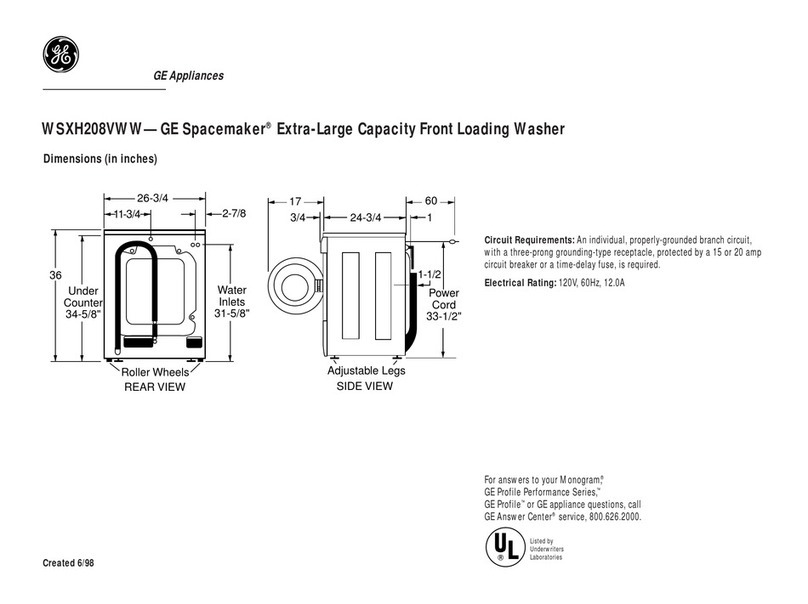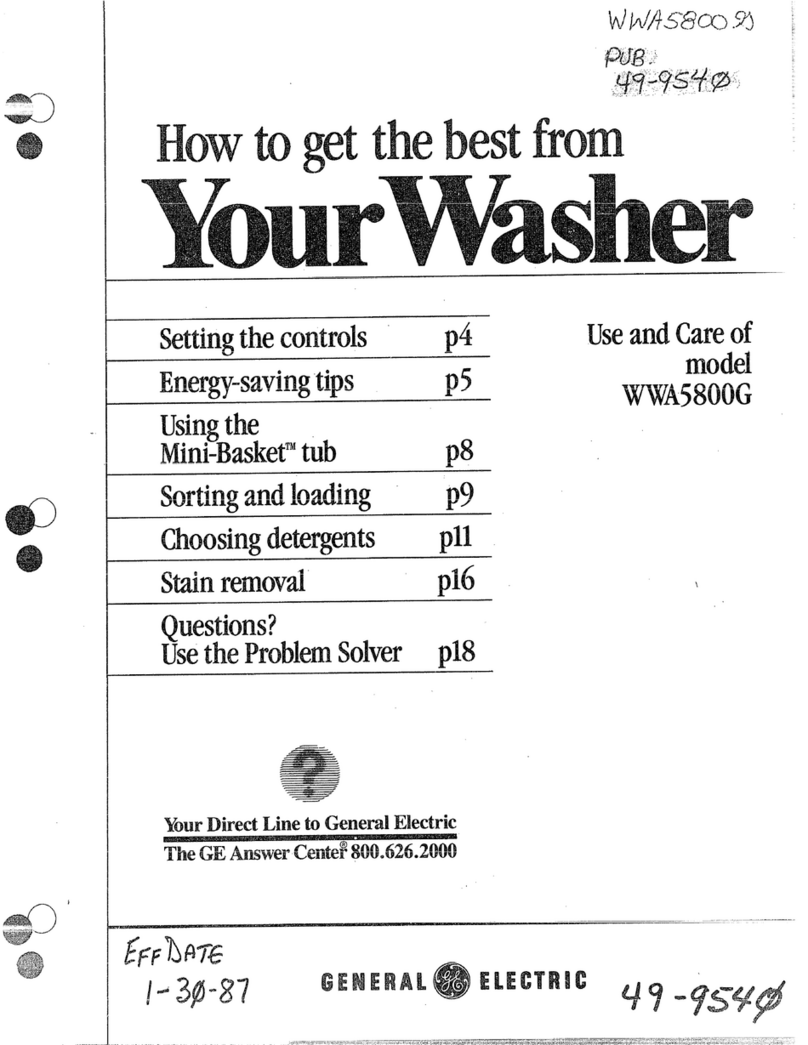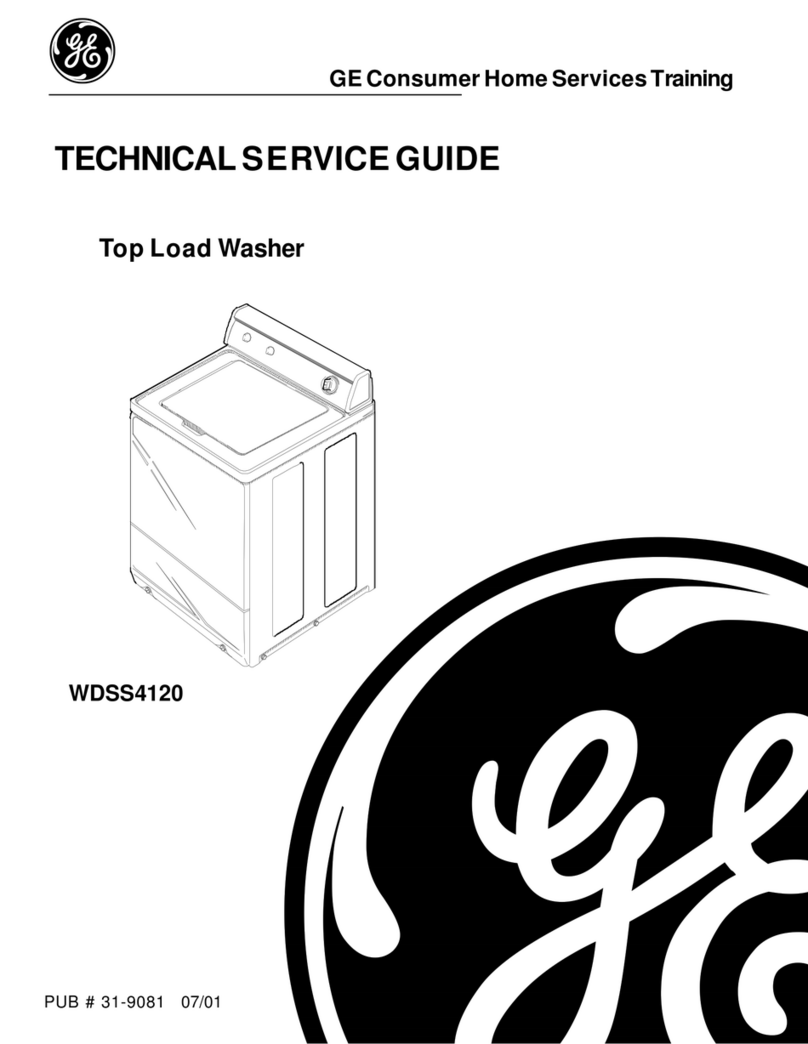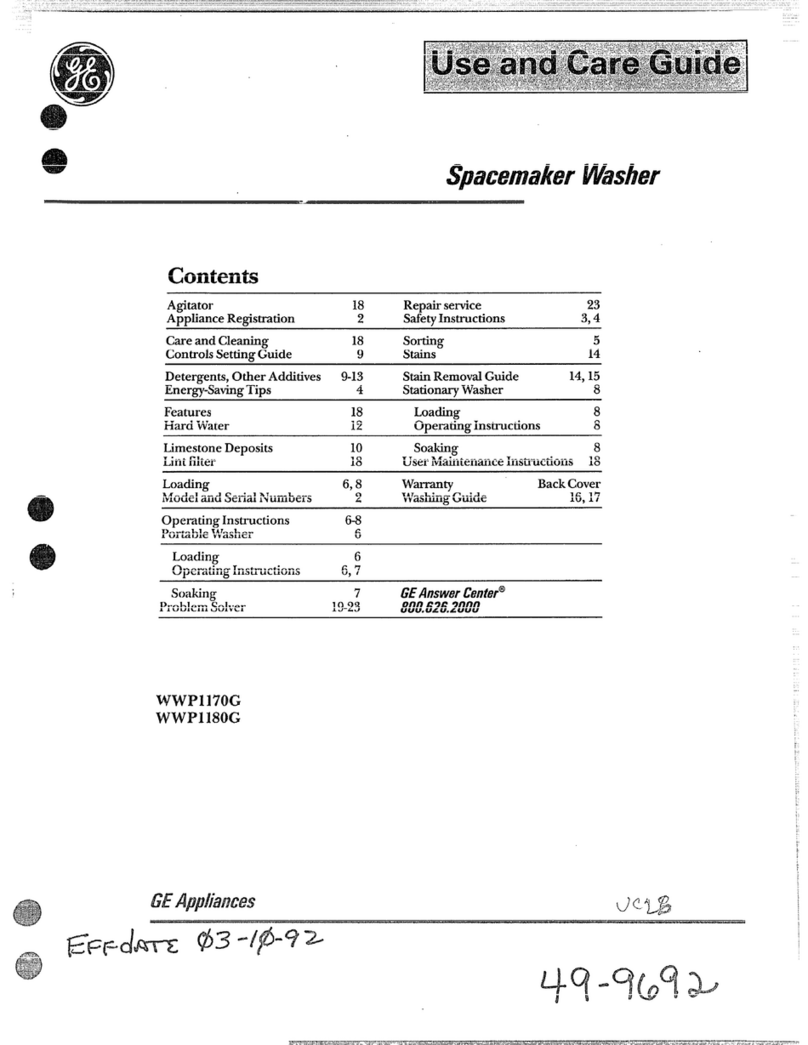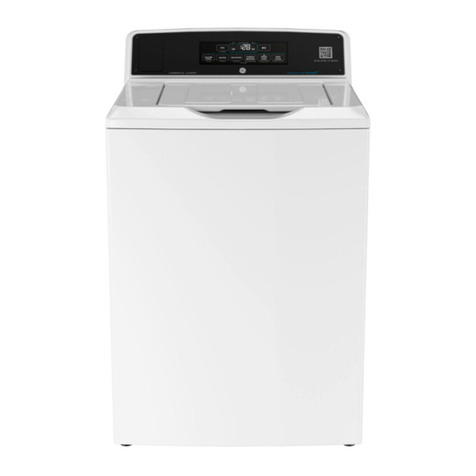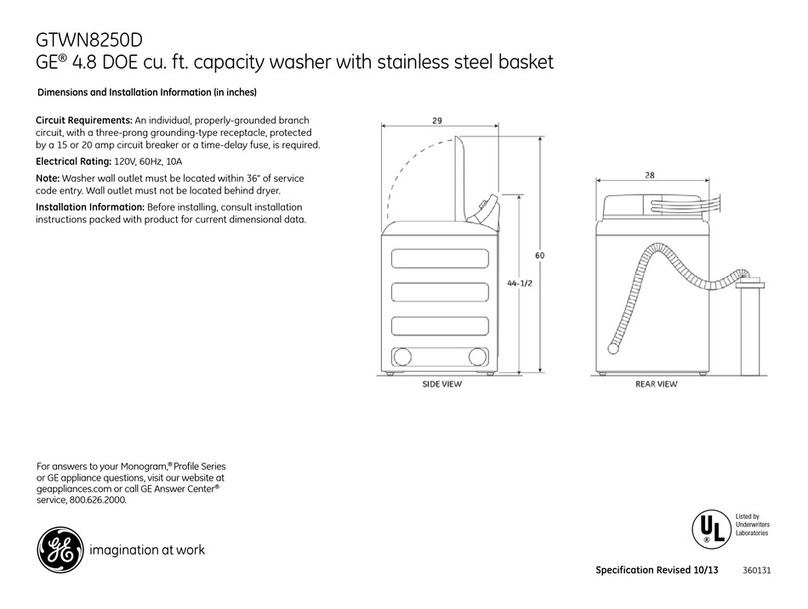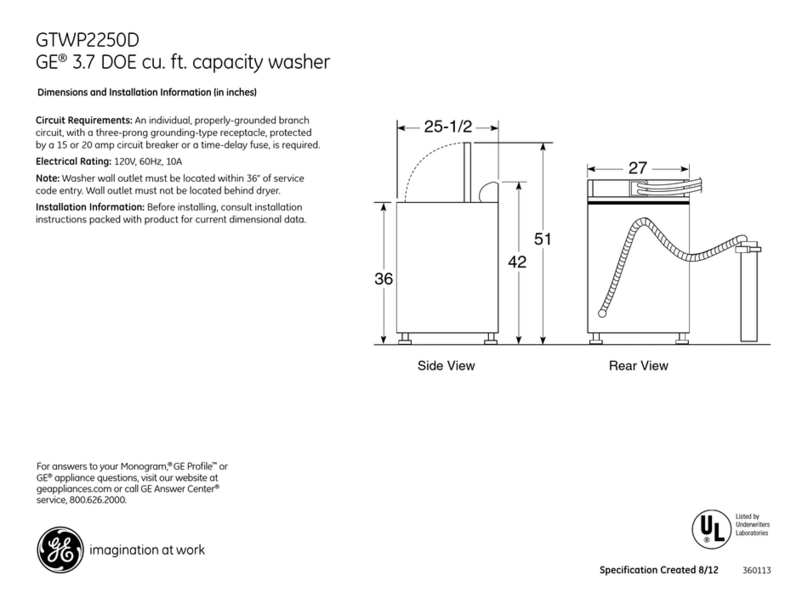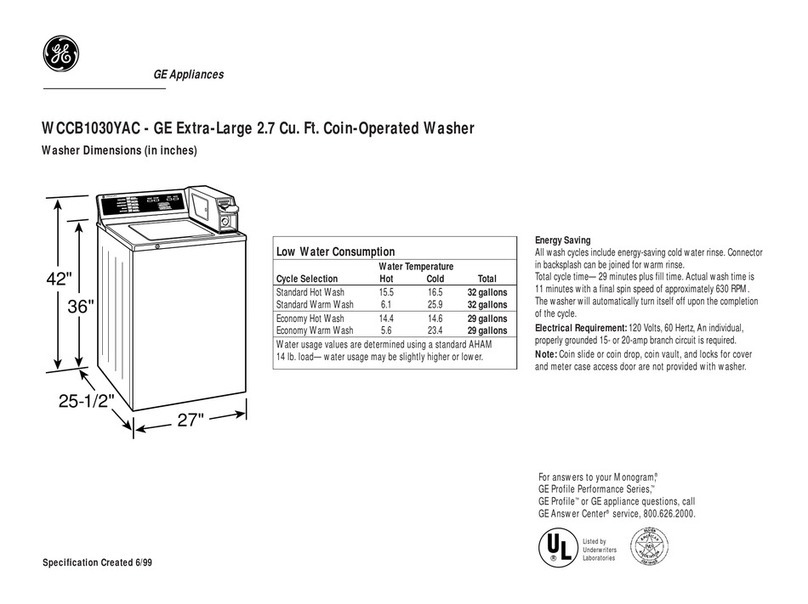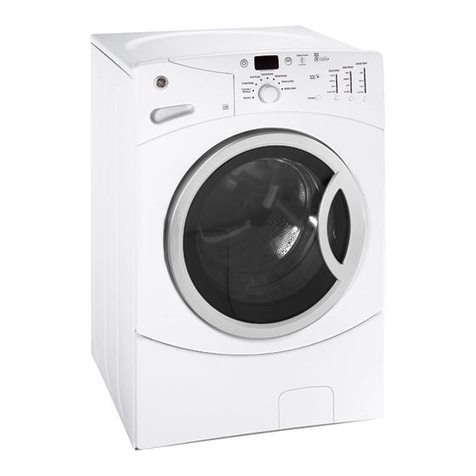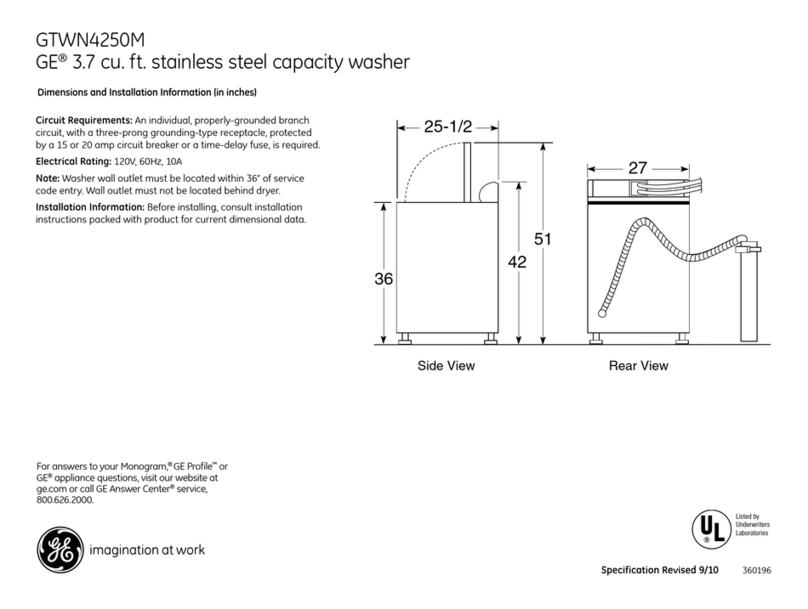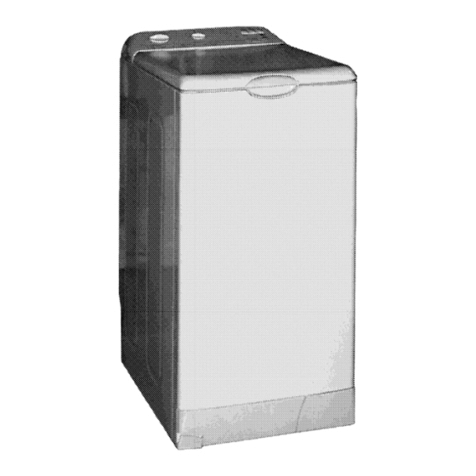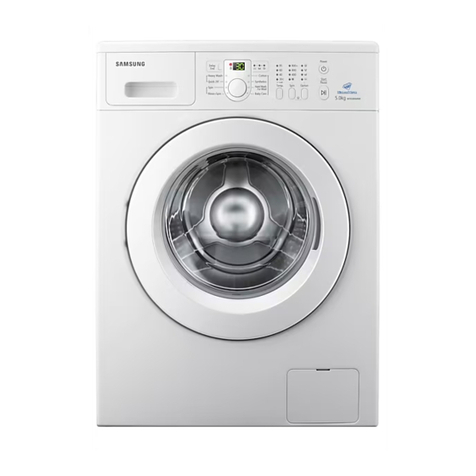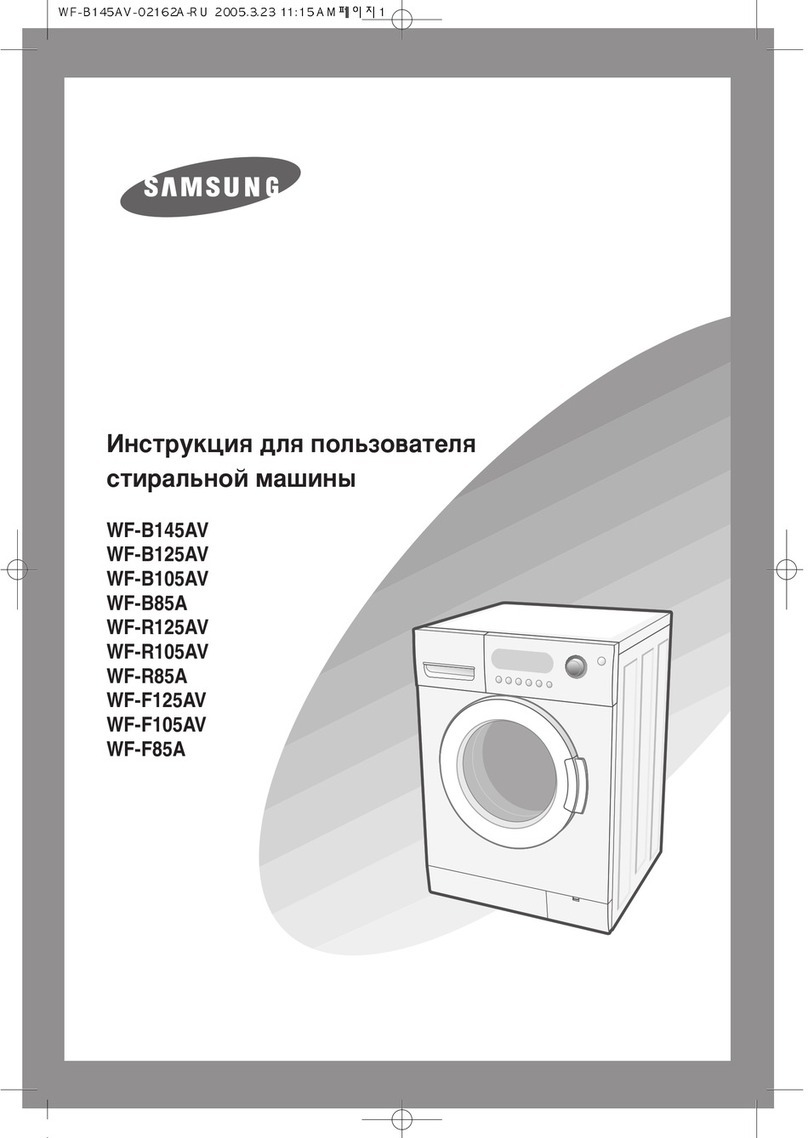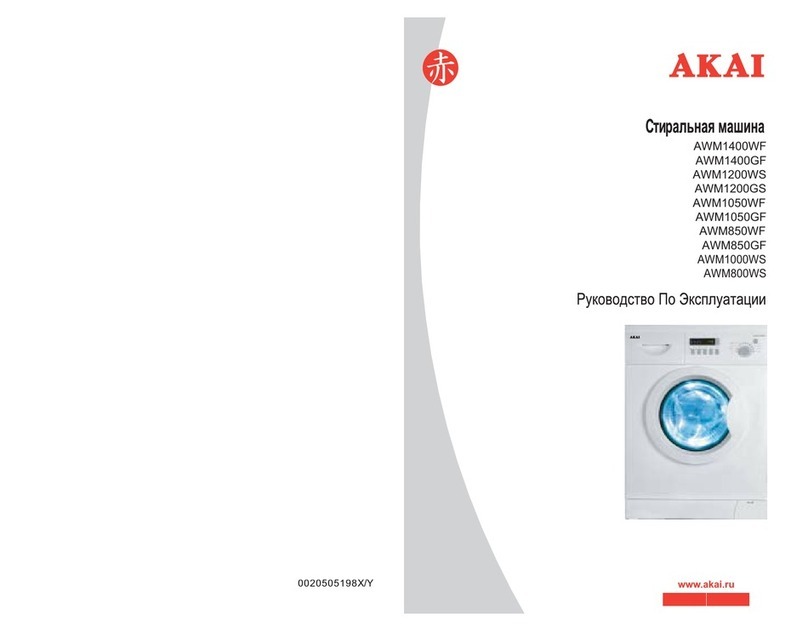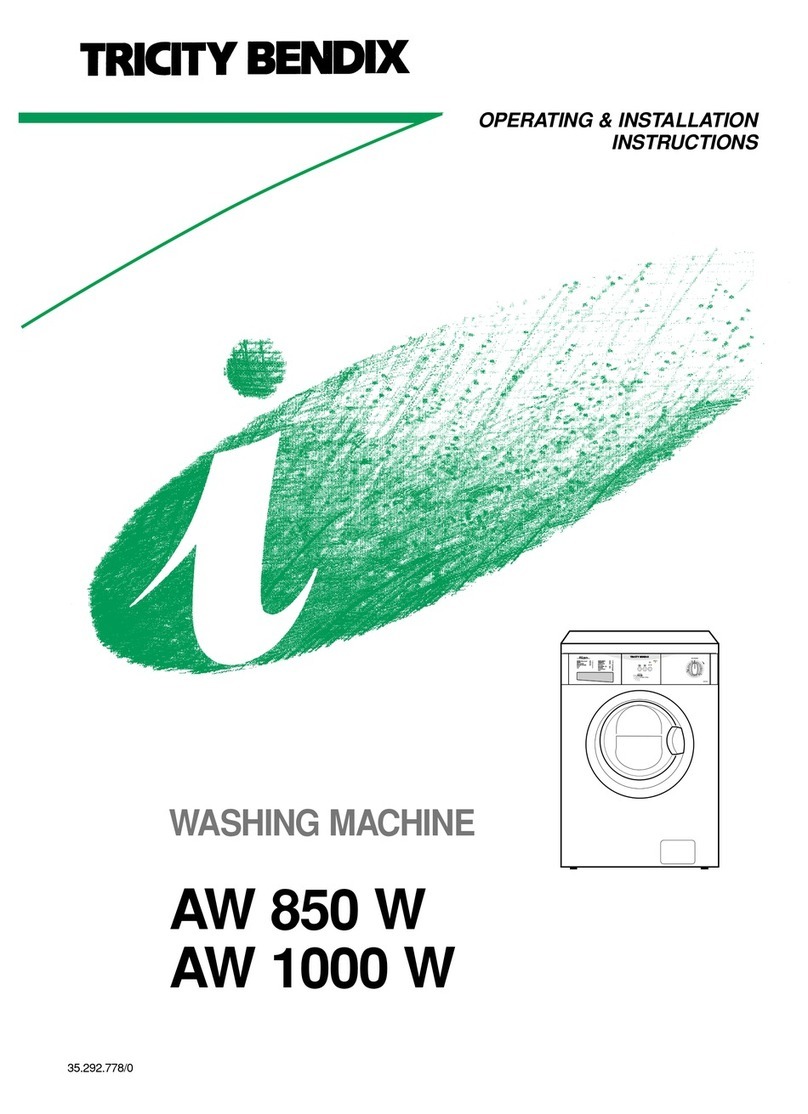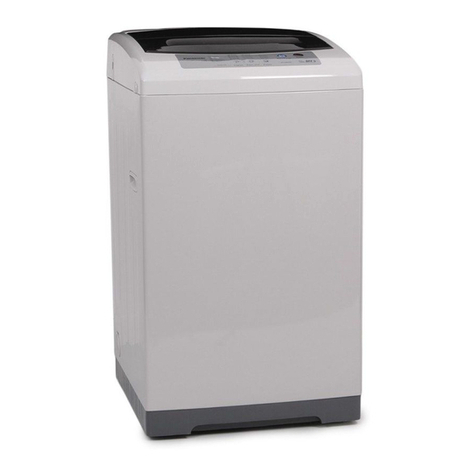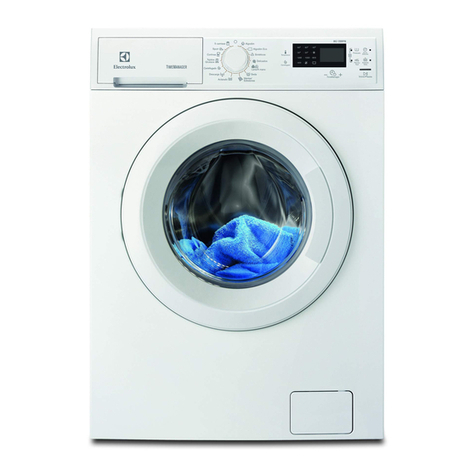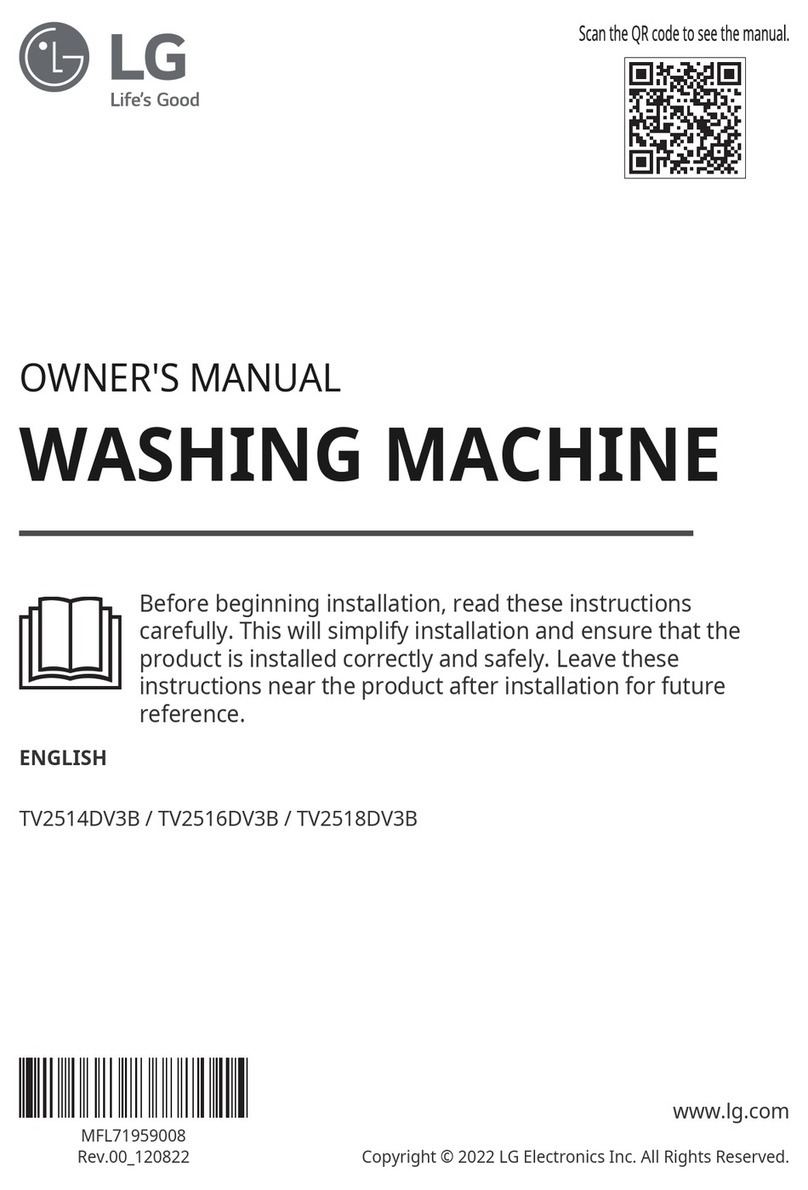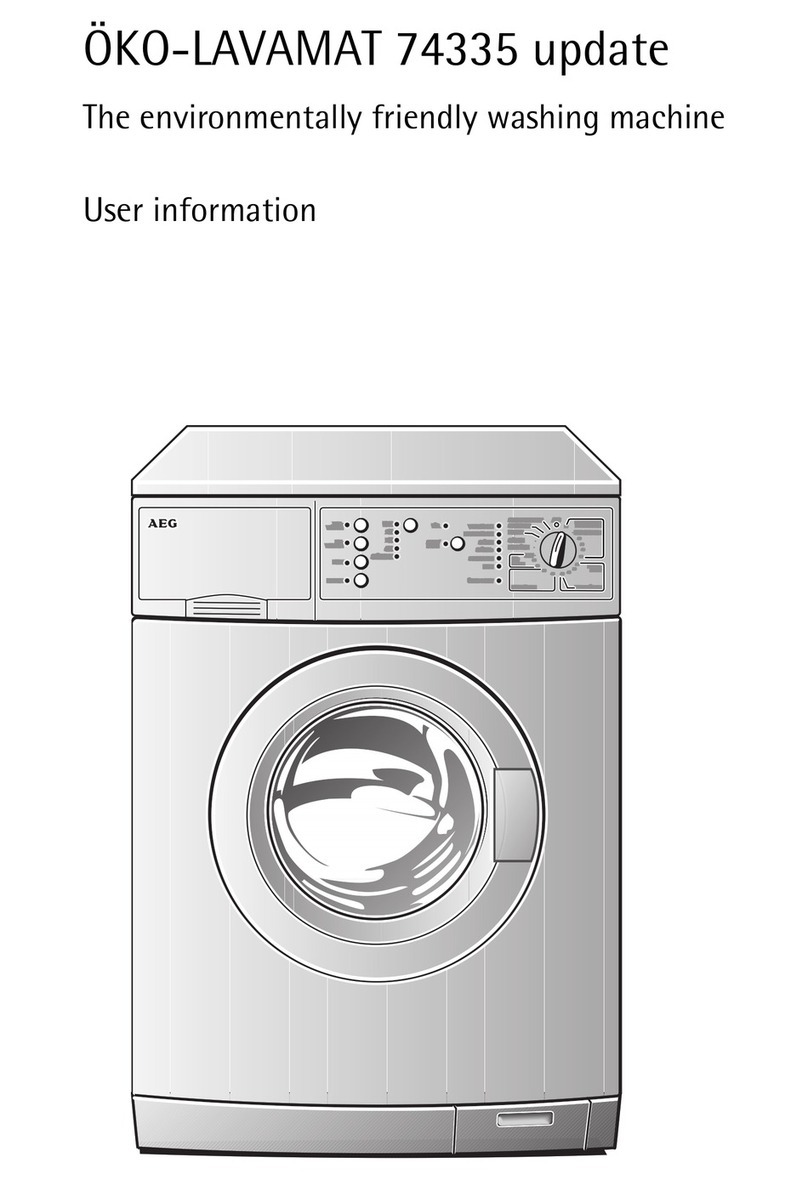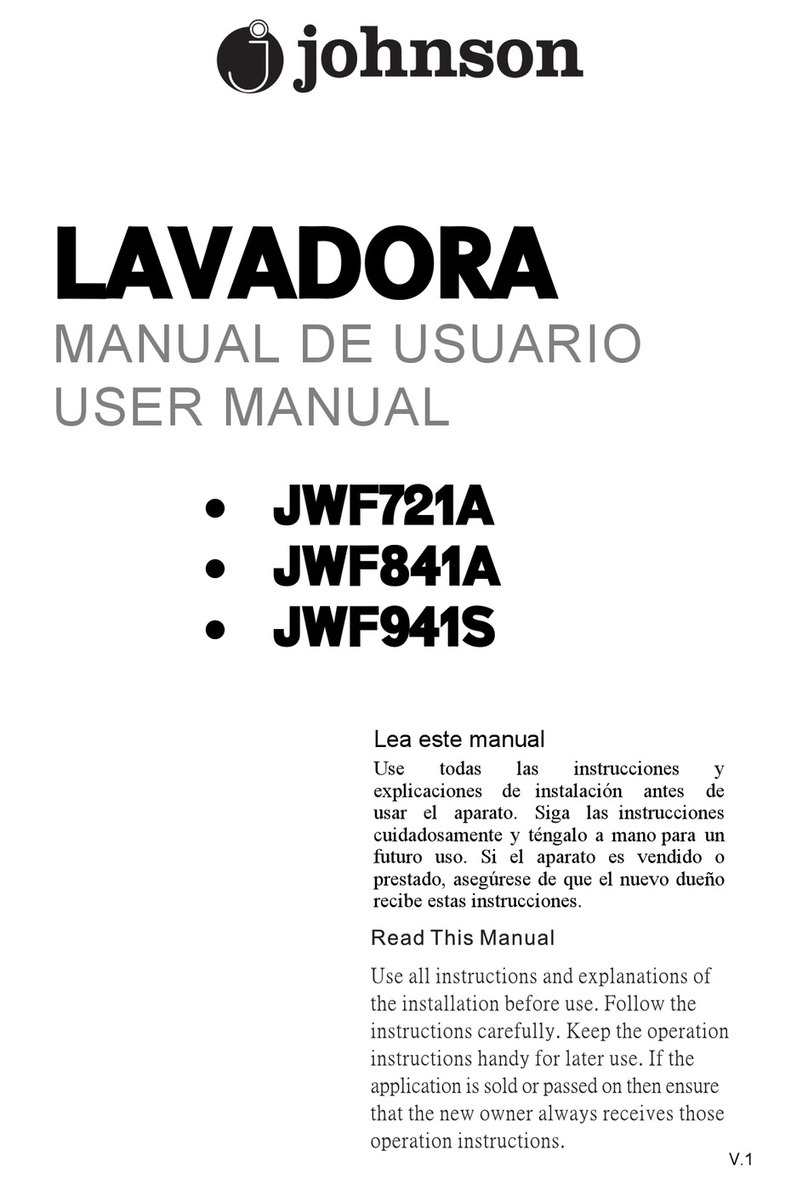5
•Keep the floor around your
appliances clean and dry to
reduce the possibility of slipping.
•Never reach into washer while
it is moving. Before loading,
unloading or adding clothes,
push in the Cycle Selector knob
and wait until the machine has
completely stopped before open-
ing the lid.
•Close supervision is necessary
if this appliance is used by or
near children. Do not allow
children to play inside, on or
with this appliance or any
discarded appliance. Dispose
of discarded appliances and
shipping/packing materials
properly. Before discarding
a washer, or removing from
service, remove the washer lid.
•Do not leave washer lid up
during cycle. This will stop
the wash and spin action and
prevent completion of the cycle.
•Do not wash or dry articles that
have been cleaned in, washed
in, soaked in, or spotted with
combustible or explosive
substances (such as wax, oil,
paint, gasoline, degreasers,
dry-cleaning solvents, kerosene,
etc.) which may ignite or
explode. Do not add these
substances to the wash water.
Do not use these substances
around your washer and/or
dryer during operation.
•The laundry process can reduce
the flame retardancy of fabrics.
To avoid such a result, the
garment manufacturer’s care
instructions should be followed
very carefully.
•Do not mix chlorine bleach with
ammonia or acids such as vinegar
and/or rust remover. Mixing can
produce a toxic gas which may
cause death.
•Never climb on or stand on the
washer top.
•Do not wash fiberglass articles in
your washer. Skin irritation could
result from the remaining parti-
cles that may be picked up by
clothing during subsequent
washer use.
•To minimize the possibility
of electric shock, unplug this
appliance from the power supply
or disconnect the washer at the
household distribution panel by
removing the fuse or switching
off the circuit breaker before
attempting any maintenance
or cleaning.
•NOTE: Turning the Cycle
Selector knob to an off position
does NOT disconnect the
appliance from the power supply.
•Do not operate this appliance
if it is damaged, malfunctioning,
partially disassembled, or has
missing or broken parts, including
a damaged cord or plug.
SAVE THESE INSTRUCTIONS
